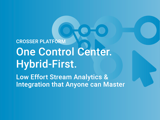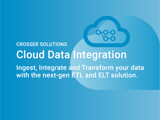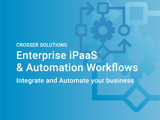What is Traditional ETL?
ETL stands for Extract, Transform, Load. Traditionally, it is a batch process used to move data from one or more sources into a destination system, such as a data warehouse or a data lake. The process is typically broken down into three stages:
Extract
Data is extracted from various sources, such as databases, files, or APIs. This can include structured data, such as relational databases, and unstructured data, such as log files or social media feeds.
Transform
The extracted data is then transformed, or cleaned and processed, to make it ready for loading into the destination system. This can include tasks such as filtering, sorting, and aggregating the data, as well as converting it into a format that can be loaded into the destination system.
Load
The transformed data is then loaded into the destination system, such as a data warehouse or a data lake. ETL is commonly used in data warehousing and business intelligence, to integrate data from different sources and make it available for reporting and analysis. It can also be used in data integration projects, where data from different systems needs to be consolidated for reporting or other uses.
ETL Overview
ETL is a process that helps organizations to collect, integrate, and manage large and complex data sets from multiple sources. It is a critical part of data warehousing and business intelligence initiatives that allow organizations to make sense of their data and gain insights that can inform business decisions. During the extraction phase, data is retrieved from various sources such as databases, flat files, web services, and other external systems.
The transformed data is then loaded into a destination system, such as a data warehouse or a data lake. This allows the data to be made available for reporting, analysis and decision-making. The destination system typically uses a data model that organizes the data in a way that makes it easy to access and query. ETL processes are typically automated and run on a regular schedule, such as daily or weekly, to ensure that the data in the destination system is up-to-date.
Real-time Event & Streaming ETL
Event Triggered Pipelines
The process can also be triggered by specific events, such as the arrival of a new file or the completion of a transaction. With the rise of big data and IoT, ETL process are becoming more complex and sophisticated, with more powerful tools, and more advanced techniques, like machine learning and natural language processing, are being used to automate the process.
New requirements calls for new Modern Solutions
9 Important Considerations
1. Connector library
A key requirement of Modern ETL tool is the ability to connect to many data sources. Examine the Crosser connector library and search among the +800 sources that is supported.
2. Event-Driven Integrations
Event-driven architecture allows you to create powerful real-time integrations. Instead of waiting for a scheduled sync, your pipelines should be updated instantly across all your applications.
3. Intelligent and Rule based
Intelligent and condition-based pipelines allow you to update the specific data that should be updated. This will speed up your updates and make your business applications smarter and faster.
4. Hybrid Integration
Modern platforms can connect and pre-process data anywhere. In the Edge, On-premises or in the Cloud. A hybrid platform increases your flexibility and enables your company to integrate to systems wherever they are located.
5. Reliability and Speed
Your ETL tool's arguably most important feature is its synchronization reliability and speed. For various use cases, you probably have multiple syncs pulling from the same connector.
6. Easy-to-Use
You must be able to use the tool, regardless of its theoretical superiority. Crosser offers a low-code drag-and-drop environment, that anyone to master.
Read more about the Crosser Flow Studio here →
7. Security
Your customers expect you to safeguard their sensitive information and your ETL tool must be build with a strong Security concept.
8. Cost of the Platform
Easy to understand pricing and the ability to calculate costs as the business grows is important to most business managers. Low entry points and a predictable price ceiling.
Contact us for Pricing →
9. Support
Equally crucial is the presence and expertise of the support team. You need a partner who will assist you in making the most of the upscaling of your data strategy.
Introducing Crosser
The All-in-One Platform for Modern Integration
Crosser is a hybrid-first platform that in one Low-code platform has all the capabilities that you traditionally would need several systems for.
In one easy-to-use platform:
- Data Ingestion & Integration
- Streaming ETL
- Batch ETL/ELT
- Reverse ETL - bidirectional
- Event Processing
- Stream Analytics
- Functions & custom code (python, C#, JavaScript)
- Inference of AI/ML models
- Automation Workflows
Platform Overview
Crosser Solution for ETL, ELT and Reversed ETL
Explore the key features of the platform here →
Want to learn more about how Crosser could help you and your team to:
- Build and deploy data pipelines faster
- Save cloud cost
- Reduce use of critical resources
- Simplify your data stack
Recommended next step:






